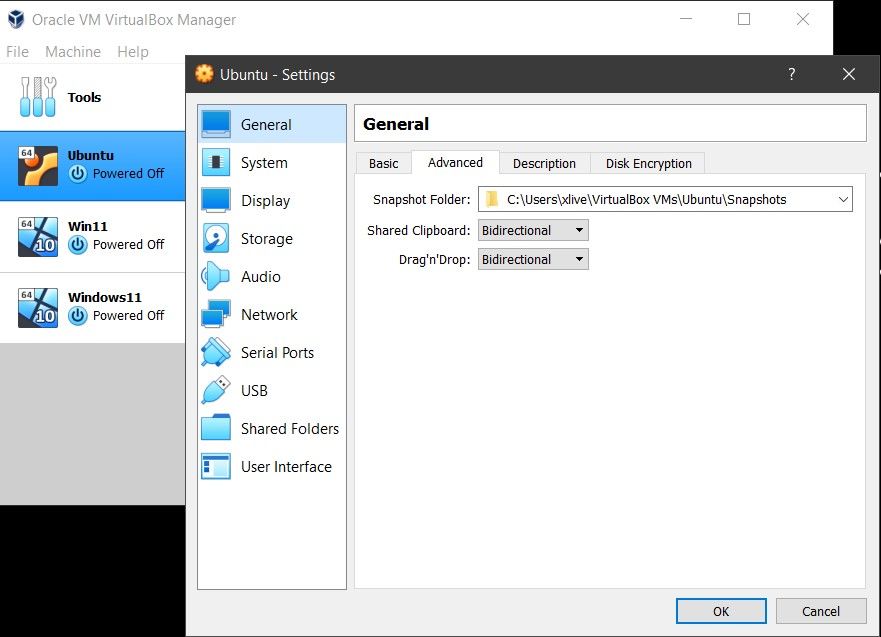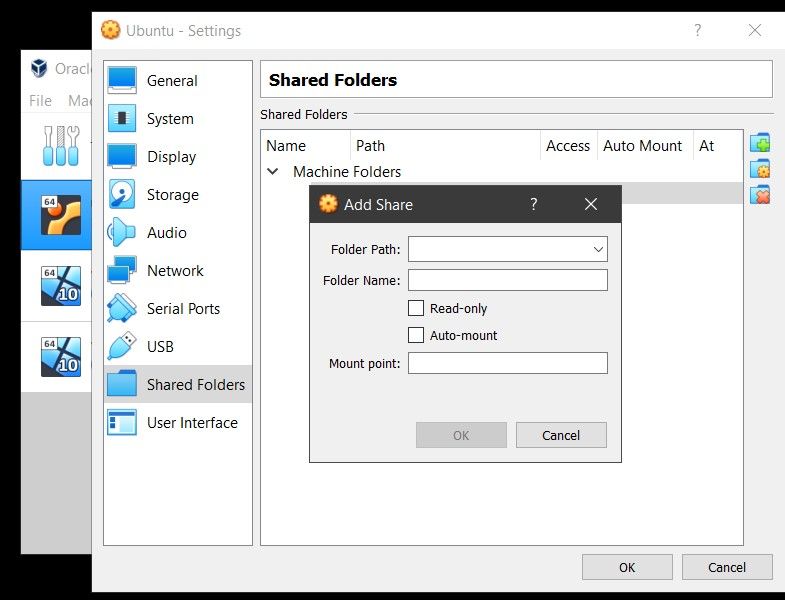How To Upload Cs File To Purude Drive
Virtual machines allow you to run a different operating system in an isolated environment, and using a virtual auto tin considerably improve your productivity. Because virtual machines, by nature, are isolated, y'all cannot direct admission files on your host PC.
Copying text or files from the host PC to the guest, or vice-versa is oftentimes a major sticking point for virtual auto users. Although it may seem complicated, the bodily process is quite straightforward. Allow'south look at the dissimilar methods for transferring files betwixt your virtual car guest operating system and host PC using VirtualBox or VMware.
How To Transfer Files From Virtual Automobile To Host
A virtual machine is a software environment that emulates the hardware required to install an operating organisation (OS). In very general terms, this lets y'all install an operating system on an existing OS, much like an app.
You won't exist surprised by the options for sharing data between a host PC any invitee operating system running in a virtual car. Hither are the iii main options to share data betwixt a virtual machine and a host PC:
- Drag and Drop (Re-create and Paste)
- USB drive
- Shared Folder
Each of these methods is ideally suited for a specific type of data and expected utilise. For example, copy and paste is best for sharing text and small files, such every bit copying code from a browser on your host PC into a terminal session in the invitee Bone.
Below, we'll expect at sharing data using these three methods on virtual machines running on Oracle VirtualBox and VMware Workstation Player
The simplest selection to transfer files between your host PC and a virtual machine is to prepare a shared clipboard and/or drag and drop. This will allow you to use a common clipboard, significant you volition be free to copy/paste text/images and files between the virtual machine and your host PC.
Shared Clipboard in VirtualBox
If you're using Oracle VirtualBox, then you lot tin set up a Shared Clipboardand Elevate'n'Dropin just a few quick steps:

- Select your virtual motorcar, right-click and selectSettings.
- In the window that pops up, click on Generalthen click on theAdvanced tab.
- You should now see the Shared ClipboardandElevate'due north'Drop dropdown options.
You tin can choose from Host to Guest, Guest to Host, and Bidirectional. There'due south also the default choice, Disabled. Select Bidirectional in both drop-down boxes to enable 2-mode file sharing.
How to Copy and Paste Information in VMware
Similar to the VirtualBox functionality, yous can likewise gear up up a shared clipboard or enable elevate and drop in VMware. But you might demand first to install the VMware Tools bundle, which brings boosted features.
- Within VMware, navigate toVM > Install VMware Tools. If you lot haven't already downloaded VMware Tools, instructions for doing so volition be given.
- You can and then enable copy and paste inVM > Settings > Options. Select Guest Isolation, then Enable copy and paste and Enable drag and drop, confirm with OK.
Sharing information between the guest and host operating systems in this way is best suited for smaller files. You might also share text strings, URLs, that sort of thing. Steer clear of large files, though—you have other options for those.
USB Stick
Using a USB stick to transfer data betwixt two physical machines is a fourth dimension-honored tradition. Although not platonic, a USB stick can transfer files between the host PC and virtual machine. Let's await at how you can use a USB drive to share data between a virtual machine and your host PC.
Transfer Files From Host To VirtualBox Using A USB stick
To be able to access USB devices from inside VirtualBox, you'll need to enable USB access. For this, you need to download the VirtualBox Extension Pack

Once you have downloaded the extension pack:
- Insert the USB device yous wish to use
- Launch VirtualBox and click File > Preferences, then Extensions and click +. Browse to the downloaded Extension Pack, click Open, and then when prompted, Install.
- Follow the prompts to complete the process. You tin can then check to confirm USB is enabled in Settings > USB.
- Yous now need to enable the added USB back up. In the chief VirtualBox window, right-click the VM you want to utilise and select Settings > USB.
- Click + and then scan for the USB device. It will be available when you launch the VM. Additional drives can be added in the same style.
How To Transfer Files To VMWare With A USB Stick
With VMware, when a USB device is connected and the VM is the active window, the device is detected. However, information technology volition not be detected by the host PC in this scenario. For this to happen, remove the drive, minimize the VM, then reconnect.
Information technology'south simple but tin can get messy if you forget which operating system the USB stick is connected to.
This option is all-time for big files. Of course, you're limited by the chapters of the USB device, so proceed that in mind. Whatever VM software you use, rubber ejection of USB devices is recommended on both host and invitee virtual machines.
Your 3rd option is to prepare a network share on your host PC that the guest VM can access. This means designating a portion of your PC'southward hard disk as attainable over the local network. With this setup, the VM can then connect to the network and access the drive.
Although physically all on the same computer, this adds higher capacity to your virtual car data sharing.
Create a Shared Folder in VirtualBox
You should have already downloaded VirtualBox Invitee Additions. This should be installed via Devices > Install Guest Additions, where you should scan for the appropriate EXE file. Follow the steps to the finish, choosing the default options, then Finish.

Launch VirtualBox and open Devices > Shared Folders > Shared Folders Settings. Click +, then in Folder Path, click the pointer and select Other. Browse (the host OS) for the folder you lot're using equally a share, highlight it, then Select Folder.
In the Add Share window, give the share a name (keeping the same name in the guest OS as the host OS is wise). Bank check Car-mount and Make permanent, then OK.
From the guest Bone, you'll find the share fix in the usual location for network shares. For example, in Windows 10, this volition be under Network Locations in Windows Explorer.
The process of creating a shared folder on VMWare is quite straightforward:
- Within VMWare Workstation, cull your virtual car and click onActor > Manage > Virtual Machine Settings
- Click onOptions > Shared Folders. You tin can and then choose a sharing option underFolder Sharing
- Click onAdd to set up up your shared folder and follow the on-screen instructions in theAdd Shared Binder Magician.
- Yous can then type theHost path to the directory you desire to share and name your binder.
- Once yous clickNext, y'all decide the binder admission (Read-only or Enable this share, the latter allows both host and the virtual auto complete access to the shared folder).
- Click onCeaseto create your shared folder.
Linux users can view the shared folder under the /mnt/hgfs directory.
While this is the most complicated selection to prepare, you lot will be able to share larger files effortlessly. These might include installers, deejay image files, and hi-res videos.
Transfer Files From VM To Host
Not everyone needs to utilise a virtual machine, merely those of united states of america who do almost always need to share data. If you're not copying files from the host to the guest OS, there's reason to re-create information from the VM. This is typically when you're nearly to destroy the VM and want to support your data.
Learning how to share data between a VM and host OS will help super-accuse your VM use.
Well-nigh The Author
Source: https://www.makeuseof.com/tag/transfer-files-virtual-machine-guest-host-pc/
Posted by: boldenshmidecir.blogspot.com



0 Response to "How To Upload Cs File To Purude Drive"
Post a Comment